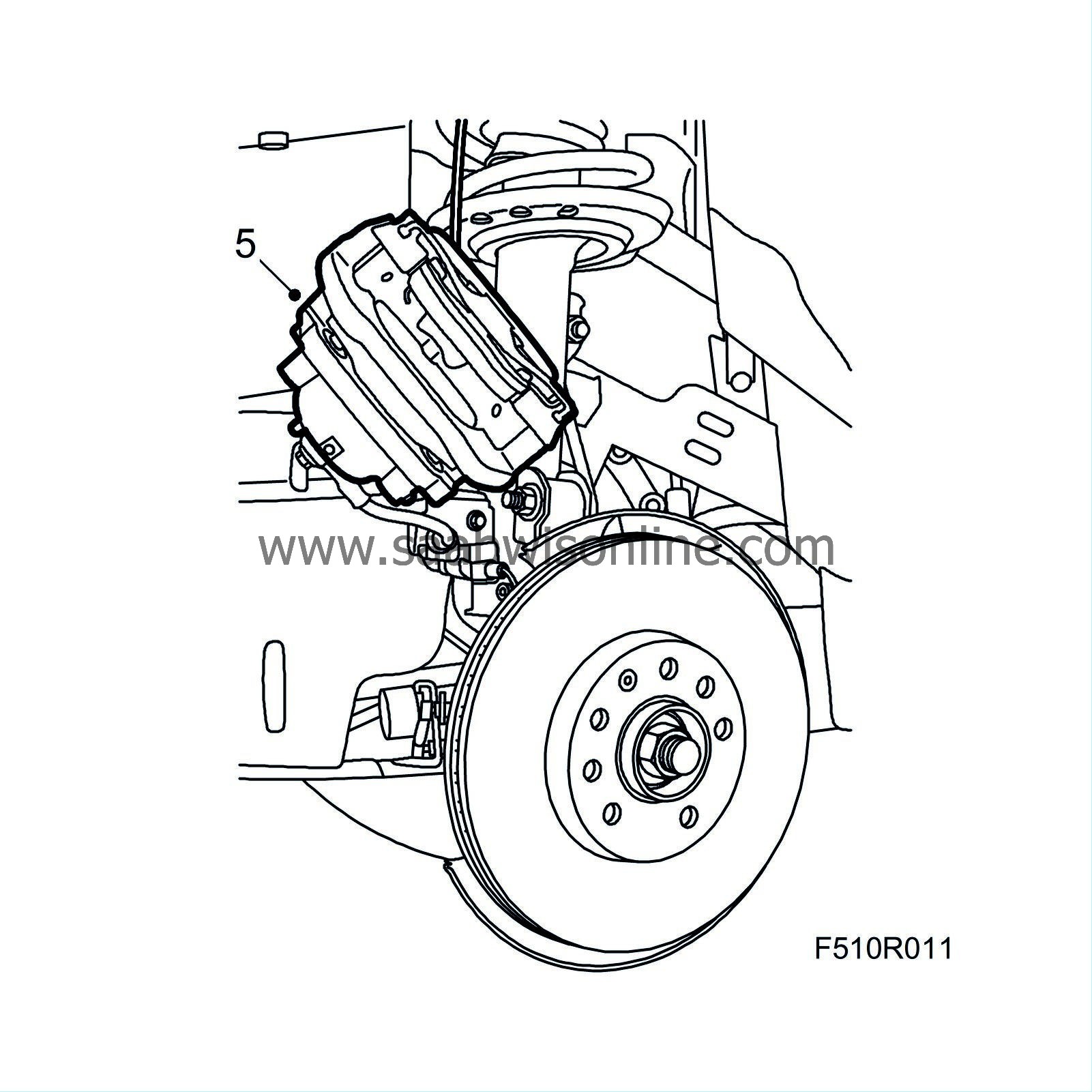Checking for lateral run-out and variation in thickness, front wheels
| Checking for lateral run-out and variation in thickness, front wheels |
| 1. |
Raise the car and remove the front wheels.
|
|
| 2. |
Start by control measuring on one side.
|
|
| 3. |
Press in the piston
|
|
| - |
Level 1 and 2:
Press in the brake pad by prising with a screwdriver.

|
| - |
Level 3:
Prise between the brake disc and the brake caliper using a screwdriver.

|
| 4. |
Remove the brake caliper retaining bolts and lift of the caliper.
|
|||||||
| 5. |
Suspend the caliper with cable ties.

|
|
| 6. |
Fit the five wheel bolts with one washer, part no. 80 73 124, on each.

|
|
| 7. |
Fit
89 96 639 Gauge, brake disc
to the upper mounting lug for the brake caliper with an M10 bolt and nut. Fit a
78 40 622 Dial gauge
on either side.
|
|
| 8. |
Rotate the brake disc while observing the outboard dial gauge. Zero both gauges when the negative reading obtained on the outboard one is at maximum.

|
|
| 9. |
Rotate the disc and read the gauges. Note the runout (A) and variation in thickness (B).
|
|
| 10. |
Check that the readings are within the tolerance limits, see
Brake discs
.
|
|
| 11. |
Remove the dial gauges, brake disc measuring tool and wheel studs with washers.
|
|
| 12. |
If runout and thickness variation exceeds specified tolerances, the discs must be machined or replaced. see
Brake disc, front
.
|
|
| 13. |
Fit the brake caliper. Secure the bolts with
74 96 268 Thread locking adhesive
.
Tightening torque: 210 Nm +30° (155 lbf ft +30°) 
|
|
| 14. |
Fit the wheel
|
|
| 15. |
Repeat this method of measurement on the other brake disc.
|
|
| 16. |
Lower the car and depress the brake pedal to press out the brake pads.
|
|


